
Anyone who was working in healthcare in 2020 knows it was a rough year. When the lockdown happened, my staff with young children didn’t have daycare anymore. They didn’t have school anymore. The grandparents who watched the kids were hunkered down in their homes and couldn’t come over. Staff with small children stopped coming to work. My job suddenly went from administrative to patient care-centered, and those patients were on the new COVID unit.
We saw a lot. We saw death on a daily basis, but we also saw some successes. Some of our patients made it home, but many didn’t. Our strength and determination carried us through the worst thing we had ever seen. As much as our friends and families commiserated with us (from afar), they didn’t understand our experience. They couldn’t.
But we survived, and we continued our mission to heal those in our care. But healing ourselves has been the bigger challenge.
As infections slowed, and testing, vaccines, and therapeutics helped slow the damage, I was able to take a breath. But I continued to wake up at 2:00 a.m. in a panic. I continued to suspect every cough I heard was a deadly infection. I couldn’t focus. A big reader all my life, I couldn’t read a book. I couldn’t read the newspaper. Twenty minutes into a movie with my husband, I’d have to ask him who that was and why they were doing that. I feared for my mental health and mental acuity.
Suspecting PTSD, the symptoms I exhibited were mild: anxiety, insomnia, hyper-awareness of danger, inability to concentrate. I had those but didn’t know how to fix them, so I started exploring online therapy.
I’ve always been interested in art, and currently have my paintings in galleries and shows throughout Northeast Ohio. But now I couldn’t paint. Everything I put on canvas looked like a preschool creation. I was despondent and nearly gave up because the most profound outlet I had for stress relief had failed. When artists are blocked, we try another medium. So I started drawing.
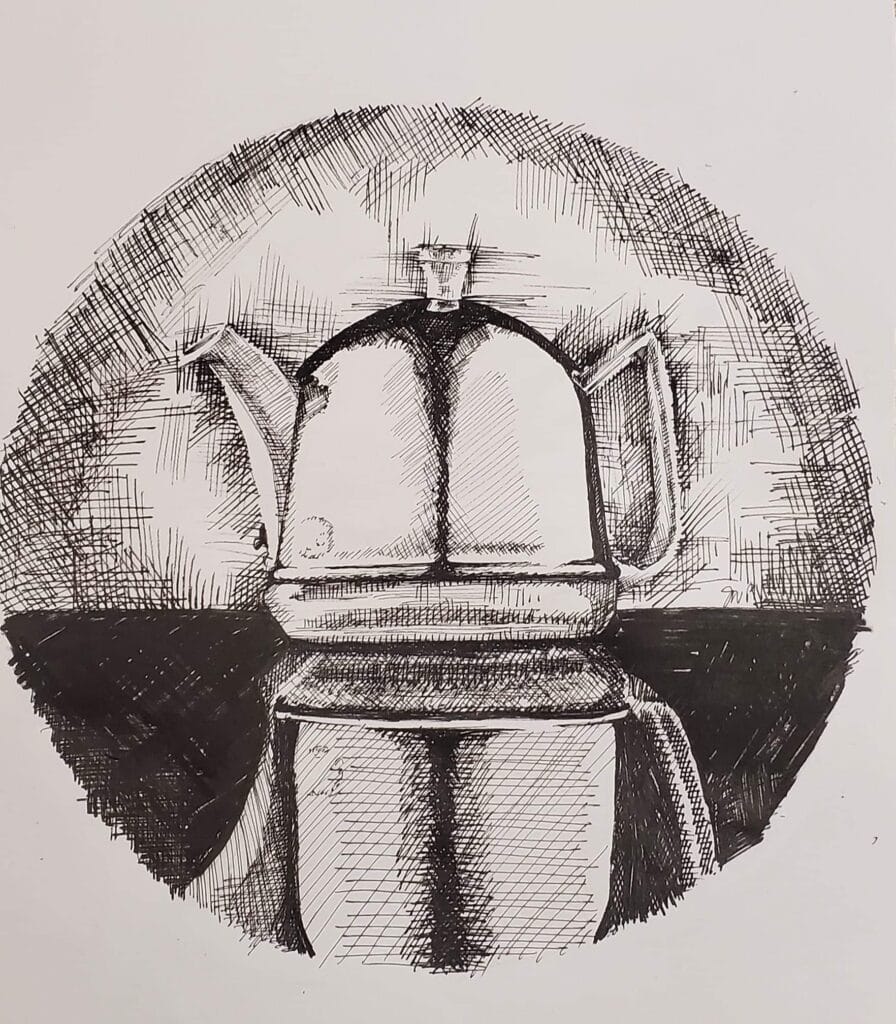
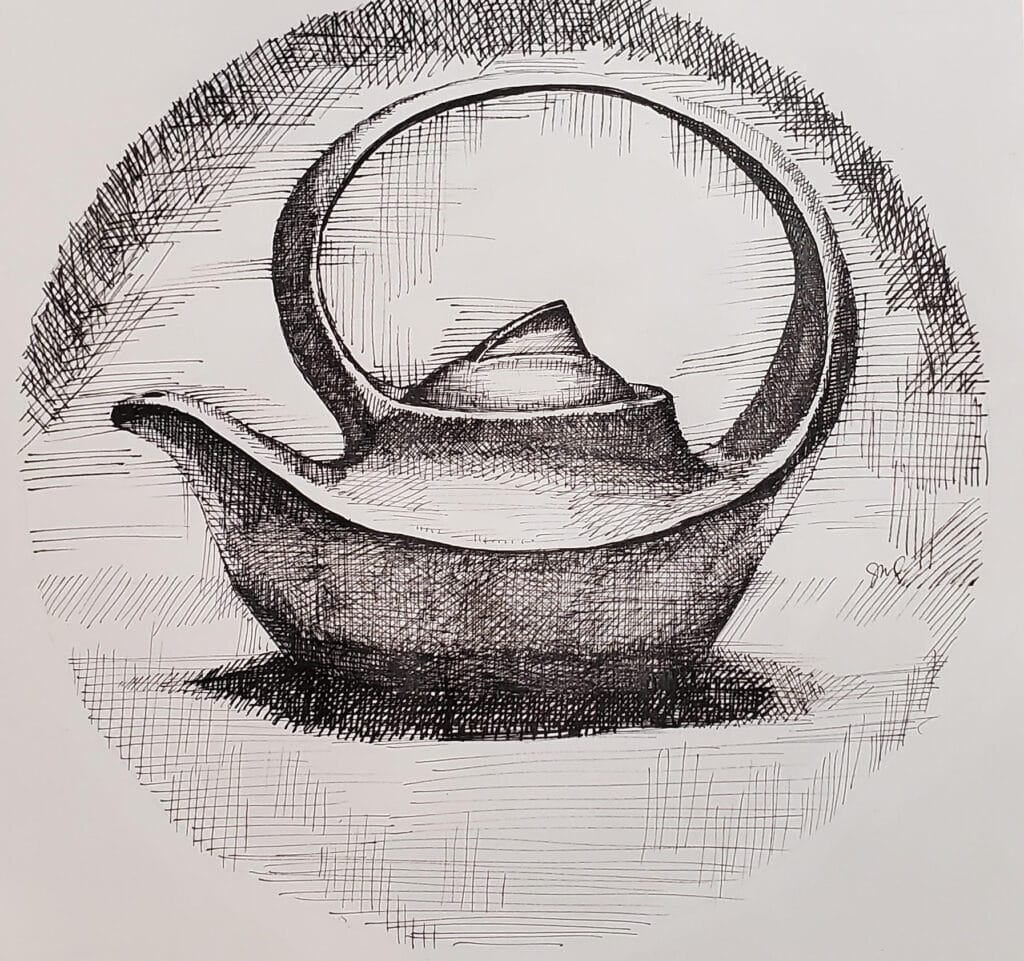
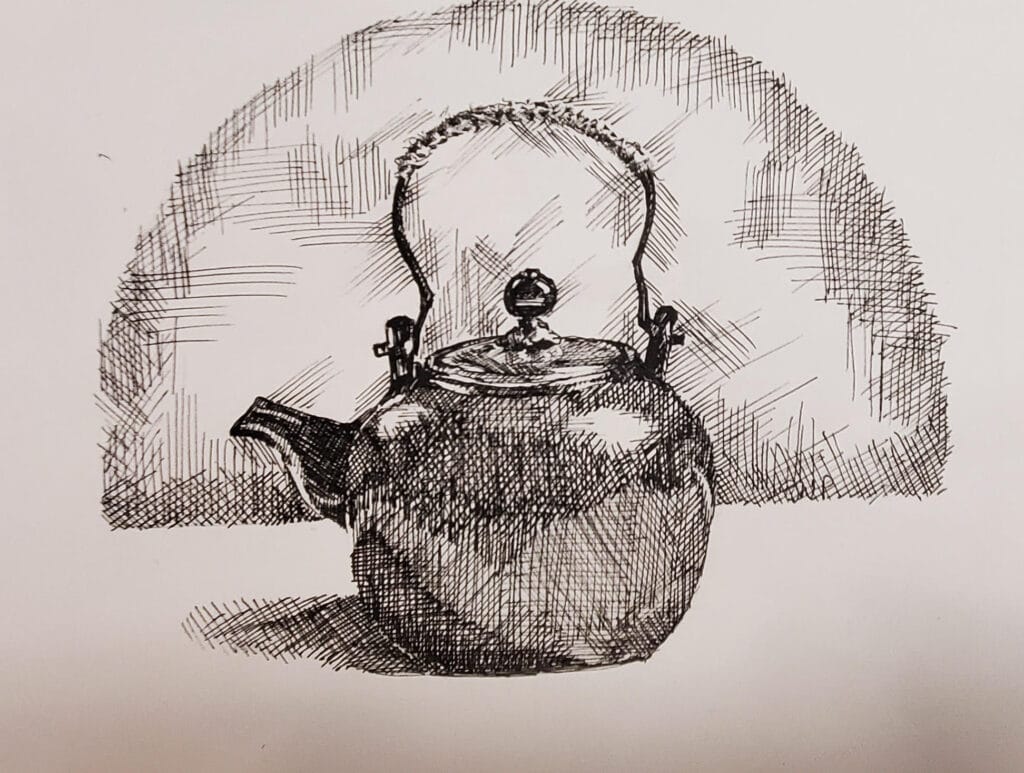
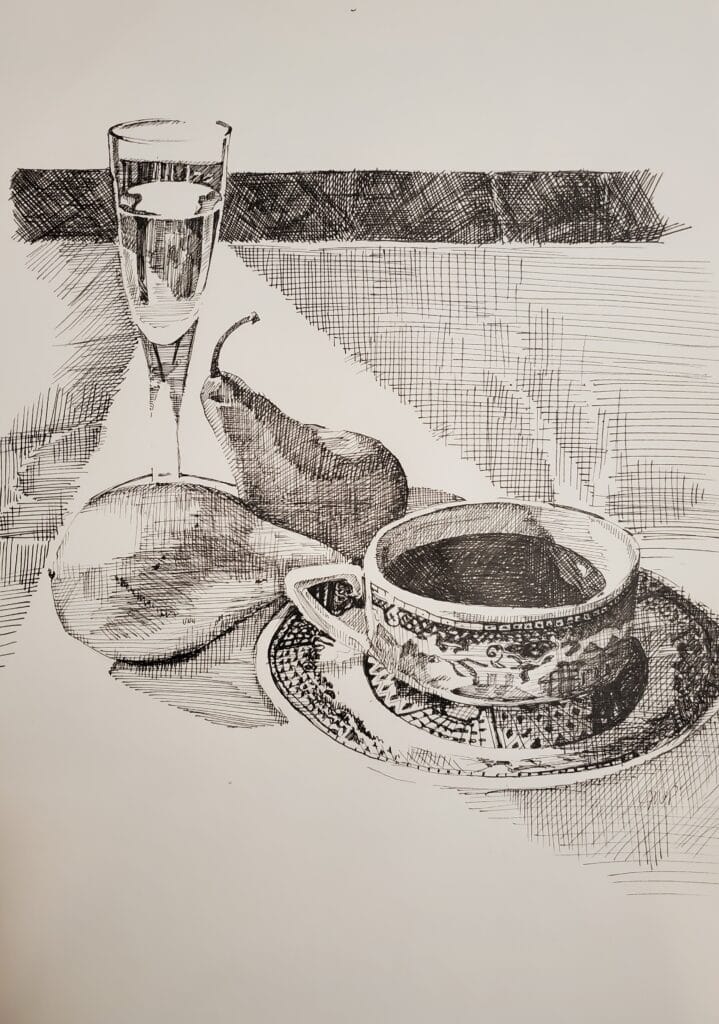
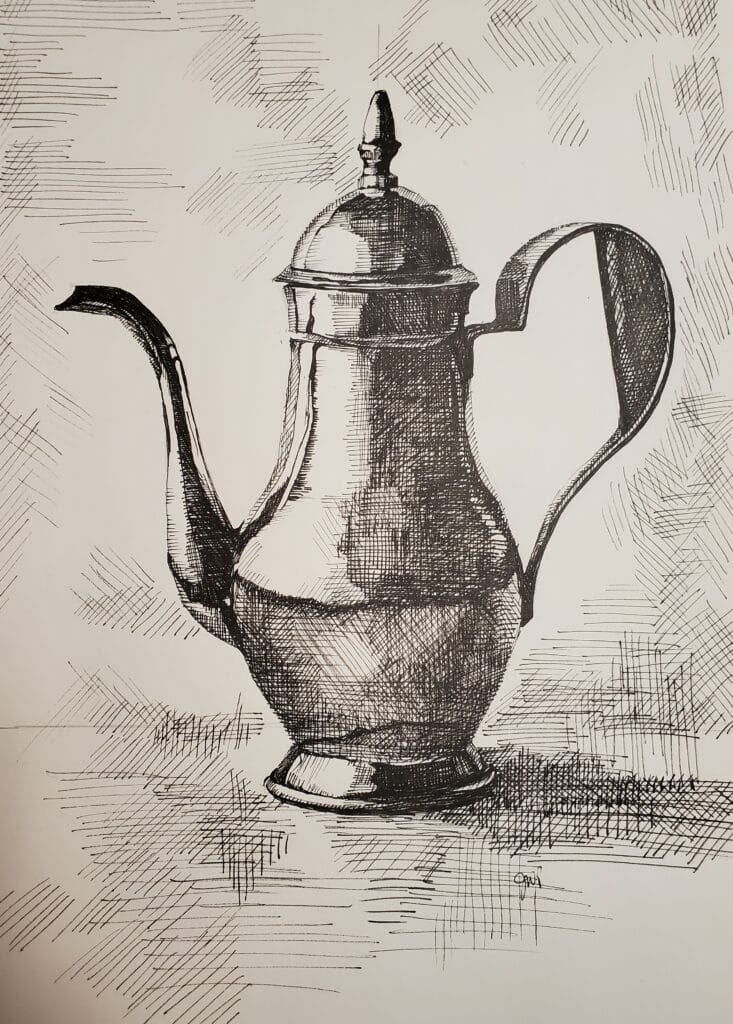
Teapot art drawn by the author.
Putting pen and ink to paper changed everything. It didn’t just change my medium. It changed my thought processes. It changed my brain. The meticulousness of having to put specific marks on paper to create a recognizable product required focus, required precision, required concentration, and required my brain to re-wire. I spoke with the manager at one of the galleries and she suggested sticking with that medium, but focusing on “homey” things. She suggested that people are stressed, more comfortable at home, and want things in their home that reflect their need to be home. I began with teapots, because who doesn’t love teapots?
I have always thought of art therapy as a nice adjunct to our treatment protocols. Putting pencil to paper can mitigate or relieve anxieties, depression or aggression by providing an outlet for negativity and promoting positivity. I had no idea that it could re-wire the brain and executive functioning of an otherwise healthy person and help her regain lost function. The Journal of the American Art Therapy Association published a PTSD-veterans study that shows how art therapy can promote reconsolidation of memories, reactivate positive emotion, enhance emotional self-efficacy, and improve self-esteem, among others. A clinical trial of art therapy for stroke survivors shows that art therapy is an effective intervention to improve executive functioning.
I draw a lot now. I draw when I feel my focus waning or when I just can’t finish a book. But I’m back to reading books and newspapers. I’m back to watching and understanding movies. I’m even back to painting. I’m back. Art therapy is not just a means of entertaining and occupying our clients; it’s a means of bringing them back to who they are and who they were. And that’s something I learned firsthand.
Jean Wendland Porter, PT, CCI, WCC, CKTP, CDP, TWD, is the regional director of therapy operations at Diversified Health Partners in Ohio.
The opinions expressed in McKnight’s Long-Term Care News guest submissions are the author’s and are not necessarily those of McKnight’s Long-Term Care News or its editors.
Have a column idea? See our submission guidelines here.





